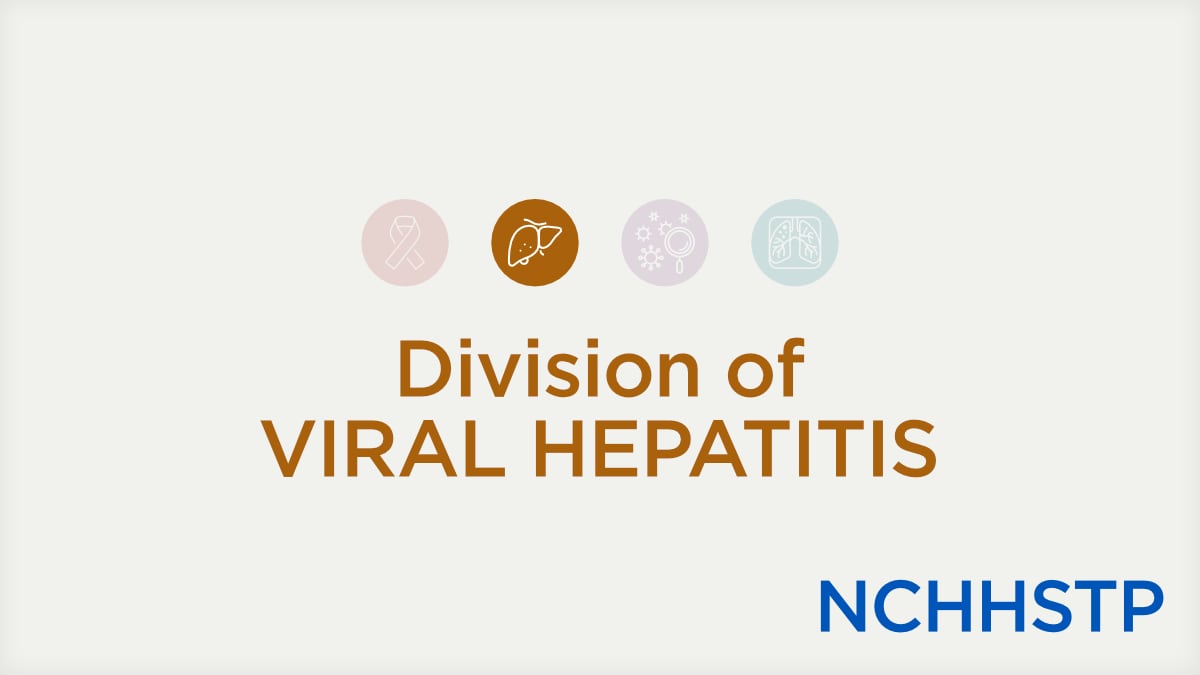At a glance
The Division of Viral Hepatitis (DVH) 2025 Strategic Plan articulates vision, mission, core values, and goals. Each goal is further defined by specific and time-bound outcome measures and supporting objectives and associated strategies.

About the viral hepatitis strategic plan
Vision
A world without viral hepatitis
Mission
To end the viral hepatitis epidemics through leadership in science and public health practices
Goals
- Reduce new viral hepatitis infections
- Reduce viral hepatitis-related morbidity and mortality
- Reduce viral hepatitis-related disparities
- Establish comprehensive national viral hepatitis surveillance for public health action
Objectives and indicators of progress
Baseline, 2025 goals, 2030 goals
| Category | Baseline | 2025 Goals (% ↓ or ↑)* |
2030 Goals (% ↓ or ↑)* |
Approximate % ↓ or ↑* for 2025/2030 |
| Goal 1: Reduce new viral hepatitis infections (estimated cases) | ||||
|---|---|---|---|---|
| Hepatitis A | 6,700 | ≤ 4,000 (↓40%) | ≤ 2,500 (↓63%) | ↓40%/↓65% |
| Acute hepatitis B | 22,200 | ≤ 18,000 (↓19%) | ≤ 2,200 (↓90%) | ↓20%/↓90% |
| Acute hepatitis C | 44,700 | ≤ 35,000 (↓22%) | ≤ 4,400 (↓90%) | ↓20%/↓90% |
| Goal 2: Reduce viral hepatitis-related morbidity and mortality (reported death rates) | ||||
| Hepatitis B-related | 0.46 | ≤ 0.37 (↓20%) | ≤ 0.16 (↓65%) | ↓20%/↓65% |
| Hepatitis C-related | 4.13 | ≤ 3.00 (↓27%) | ≤ 1.44 (↓65%) | ↓25%/↓65% |
| Goal 3: Reduce viral hepatitis-related disparities (reported case rates) | ||||
| New hepatitis B, PWID≠ |
1.4 | ≤ 1.0 (↓29%) | ≤ 0.1 (↓93%) | ↓25%/↓90% |
| New hepatitis C, PWID≠ |
2.3 | ≤ 1.7 (↓26%) | ≤ 0.2 (↓90%) | ↓25%/↓90% |
| Hepatitis B-related deaths, A/PIs |
2.45 | ≤ 1.84 (↓25%) | ≤ 0.86 (↓65%) | ↓25%/↓65% |
| Hepatitis C-related deaths, AI/ANs |
10.24 | ≤ 7.17 (↓30%) | ≤ 3.58 (↓65%) | ↓30%/↓65% |
| Hepatitis C-related deaths, non-Hispanic Blacks |
7.03 | ≤ 4.92 (↓30%) | ≤ 2.46 (↓65%) | ↓30%/↓65% |
| Indicators of Progress | ||||
| 1.3: Hepatitis B birth dose (0–1 day) |
67% (2015–2016 birth years) |
≥ 75% (↑12%) (2021–2022 birth years) |
≥ 90% (↑34%) (2026–2027 birth years) |
↑10% (2021–2022 birth years)/↑35% (2026–2027 birth years) |
| 2.1: % Hepatitis B aware of infection |
32% (2013–2016) |
≥ 50% (↑56%) (2021–2024) |
≥ 90% (↑181%) (2025–2028) |
↑55% (2021–2024)/ ↑180% (2025–2028) |
| 2.3: % Hepatitis B engaged in care |
26% (2013–2016) |
≥ 40% (↑54%) (2021–2024) |
≥ 80% (↑208%) (2025–2028) |
↑55% (2021–2024)/ ↑210% (2025–2028) |
| 2.4: % Hepatitis C viral clearance |
43% (2013–2016) |
≥ 58% (↑35%) (2021–2024) |
≥ 80% (↑86%) (2025–2028) |
↑35% (2021–2024)/ ↑85% (2025–2028) |
Note: Unless otherwise noted, baseline data are from 2017, 2025 goals are based on 2023 data, and 2030 goals are based on
2028 data. Rates are per 100,000 population.
*Reductions are compared to 2017, unless otherwise noted.
≠18–40-year-olds serve as a proxy for persons who inject drugs (PWID).
A/PIs = Asians and Pacific Islanders; AI/ANs = American Indians and Alaska Natives
Data sources
| Goal / Indicator of Progress* | Hepatitis Virus | Data Source | Data Utilized | ||
|---|---|---|---|---|---|
| Baseline | 2025 Goals | 2030 Goals | |||
| New infections | A, B, C | NNDSS | 2017 | 2023 | 2028 |
| Birth dose vaccination | B | NIS - Child | 2015–2016 birth years | 2021–2022 birth years | 2026–2027 birth years |
| Deaths | B, C | NVSS | 2017 | 2023 | 2028 |
| Awareness of infection | B | NHANES | 2013–2016 | 2021–2024 | 2025–2028 |
| Engagement in care | B | NHANES | 2013–2016 | 2021–2024 | 2025–2028 |
| Viral clearance | C | NHANES | 2013–2016 | 2021–2024 | 2025–2028 |
- * 18-40 year-olds serve as a proxy for PWID
- AI/ANs = American Indians and Alaska Natives
- A/PIs = Asians and Pacific Islanders
- PWID = people who inject drugs
